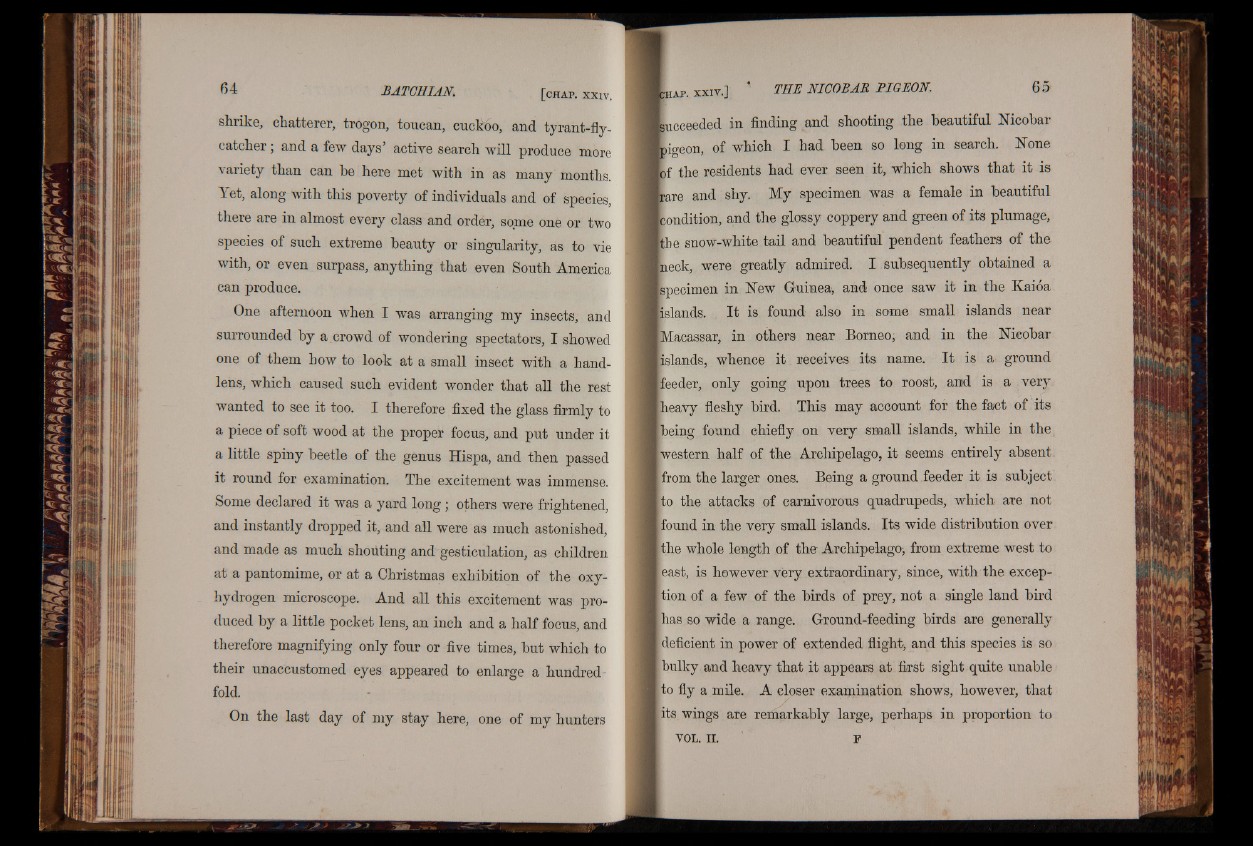
shrike, ehatterer, trogon, toucan, cuckoo, and tyrant-fly-
catcher; and a few days’ active search will produce more
variety than can he here met with in as many months.
Yet, along with this poverty of individuals and of species,
there are in almost every class and order, some one or two
species of such extreme beauty or singularity, as to vie
with, or even surpass, anything that even South America
can produce.
One afternoon when I was arranging my insects, and
surrounded by a crowd of wondering spectators, I showed
one of them how to look at a small insect with a hand-
lens, which caused such evident wonder that all the rest
wanted to see it too. I therefore fixed the glass firmly to
a piece of soft wood at the proper focus, and put under it
a little spiny beetle of the genus Hispa, and then passed
it round for examination. The excitement was immense.
Some declared it was a yard long ; others were frightened,
and instantly dropped it, and all were as much astonished,
and made as much shouting and gesticulation, as children
at a pantomime, or at a Christmas exhibition of the oxy-
hydrogen microscope. And all this excitement was produced
by a little pocket lens, an inch and a half focus, and
therefore magnifying only four or five times, but which to
their unaccustomed eyes appeared to enlarge a hundredfold.
On the last day of my stay here, one of my hunters
Succeeded in finding and shooting the beautiful Mcobar
■pigeon, of which I had been so long in search. None
|of the residents had ever seen it, which shows that it is
■are and shy. My specimen was a female in beautiful
■condition, and the glossy coppery and green of its plumage,
itbe snow-white tail and beautiful pendent feathers of the
■neck, were greatly admired. I subsequently obtained a
■specimen in New Guinea, and once saw it in the Kaioa
Islands. It is found also in some small islands near
■Macassar, in others near Borneo, and in the Nieobar
■islands, whence it receives its name. It is a ground
■feeder, only going upon trees to roost, and is a very
■heavy fleshy bird. This may account for the fact of its
■being found ehiefly on very small islands, while in the
■western half of the Archipelago, it seems entirely absent
■from the larger ones. Being a ground feeder it is subject
■to the attacks of carnivorous quadrupeds, which are not
■found in the very small islands. Its wide distribution over
■the whole length of the Archipelago; from extreme west to
least, is however very extraordinary, since, with the exceptio
n of a few of the birds of prey, not a single land bird
■has so wide a range. Ground-feeding birds are generally
■deficient in power of extended flight, and this species is so
■ bulky and heavy that it appears at first sight quite unable
I to fly a mile. A closer examination shows, however, that
I its wings are remarkably large, perhaps in proportion to